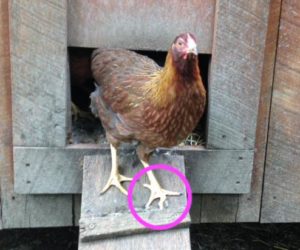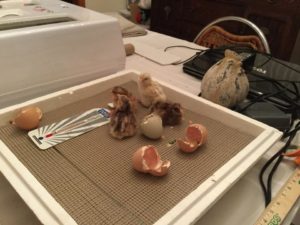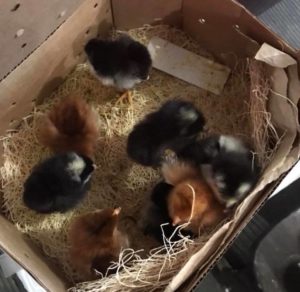Acquiring baby chicks is always exciting! But what happens when a chick doesn’t turn out as planned and a deformity is present? When it comes to raising chicks there are a few common deformities that you may experience from time to time. Hand-picking chicks from a breeder or farm store can help to minimize the risk. When ordering from mail-order hatcheries you get what you get. Though hatcheries will reimburse you for the deformed chick but accept no returns. Some of the conditions are easily remedied while others are a lifetime commitment.
Splay Leg Deformity
Splay leg also referred to as “Spraddle Leg” this common deformity causes one or both of the legs to lay offside of the chick rather than under the body. It makes it impossible to stand let alone walk. This is a rather common deformity amongst chicks, some are born with it, while others obtain it from walking or slipping on improper brooder bedding (e.g. newspaper). It’s thought that those born with it have a vitamin deficiency or a problem occurred with the temperature during incubation. Splinting the legs into the correct position has shown some success.
Cross Beak Deformations

Little Cross Beak chilling in her coop. RIP

photo by Casey Morse
Cross beak (aka. Scissor beak or parrot beak) this deformation typically grows worse as the chick ages. The top of the beak frequently crosses over the bottom portion, much like cross jaw in a human. Or the bottom is to short comparing to an underbite. Because the beak does not align precisely they often require extra help with feeding and drinking. Deeper bowls seem to help manage the issue, feeding separately is also an option. The deformity doesn’t allow the beak to be naturally rubbed down, therefore occasional trimming will be needed. However, make sure not to cut too much or they will bleed profusely.
Wry Neck Syndrome
Wry neck Syndrome (also called torticollis or crooked neck) is characterized by the head rotating to one side. This deformity typically caused by a vitamin deficiency particularly vitamin B1. Easily prevented and treated by adding electrolytes and vitamin supplements to the water. Other causes of a turned neck can come from an injury or inherited disorder.
Curled Toe Deformity

photo by Casey Morse

photo by author
Curled-toe is a lame term used to describe toes that are curled or appear broken. Often caused by a, vitamin B2/Riboflavin deficiency. Quick treatment can reverse the effects or prevent the illness. Clinical signs appear 8-14 days after hatching, to combat the issue make sure to feed a chick food with a minimum riboflavin content of 4.4 mg/kg (2.0 mg/lb). The deformity is often caused by breeding Riboflavin deficient parents. Therefore if this happens after you have incubated chicks treat the parents for the deficiency as well. The addition of green leafy plants like Alfalfa, chives, coriander, asparagus, and broccoli to your chicken’s diet will help maintain their levels.

While each deformity comes with its own set of obstacles most can be cured or managed. Knowing the signs and treatments for each is half the battle. Like most things in life catching it quickly can be the difference between life and death. However, even with the best intentions and support, not every little chick will survive. All you can do is your best to give the chick a fighting chance.
Carrie Miller has a do-it yourself website/blog that is full of fun chicken projects. Her family is raising all-natural chickens with no antibiotics, no medications and no pesticides in Kinsman, Ohio. You can find her at Miller Micro Farm or follow her on Facebook, Instagram or Twitter.














1 Comment
I am starting chickens this year, and need to know all about their deformity inside and outside